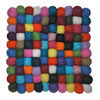SCANDINAVIAN 132: Introduction to Finnish Culture and History: “Finland 101”
TuTh 11-12:30 Fall 2018, Wheeler 106. Instructor: Lotta Weckström
Units: 4
Finland is a Nordic nation that celebrated 100 year of independence in December 2017. To mark the centennial celebration, the Department of Scandinavian is offering a course an Finnish Culture and History with a focus on the ten decades of Finnish independence — Finland 101.
Finland today is a technologically advanced welfare state, a social democracy that shares a great deal with its Nordic neighbors, yet has retained a vibe of its own. What makes Finland stand apart from its neighbors? Perhaps because of its unique language which is not related to the Scandinavian or Slavic languages, or its geopolitically interesting location between East and West. Maybe its fascinating national epic, the Kalevala, modern curiosities such the sport of wife-carrying, the basic income experiment, or Clash of Clans – brainchild of a Finnish gaming company?
During this course we will walk though 100 years of Finnish history in the context of the turbulent times in Europe and Russia, explore a variety of cultural expressions such as music, literature, folklore, art, architecture, film, and popular culture. We will also examine the concept of national identity – what creates a community, a people? What, exactly, is a baby box, does the language really lack the concept of future, are Finns the most introverted people of the world, and do they honestly go to the sauna several times a week? Come and find out!
Texts:
Lavery, Jason. The History of Finland.
Course Reader:
Includes articles on history, society, politics, art, and literature, as well as literary texts by classic and modern authors. Excerpts of Kaleva in translation, and articles provided by guest speakers TBA. Accessible on bCourses
Prerequisites: None. Taught in English; readings in English.
Requirements:
3 quizzes (15%)
In-class midterm (20%)
In-class final exam (25%)
Attendance and participation in classroom discussion, and group/pair work (15%)
Presentation (15%)
3 Homework assignments (10%)
